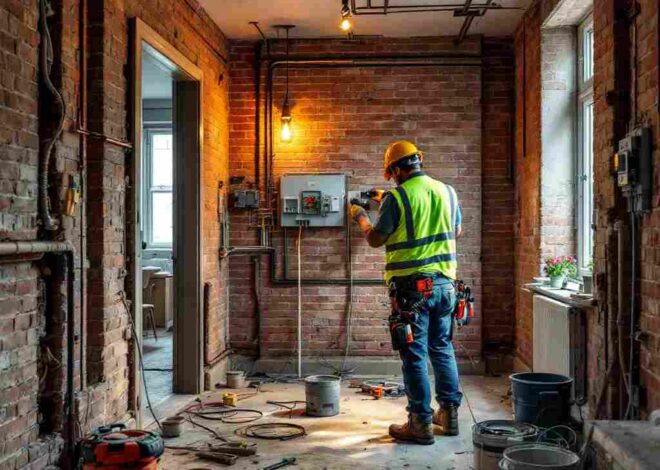
The Ultimate Guide to DIY Clogged Drain Repair
Clogged drains are an all-too-common nuisance that can disrupt the daily flow of household activities. We’ve all been there – standing in a shower that’s turning into a bathtub, or watching the kitchen sink fill up with murky water instead of draining away. The frustration is palpable and immediate.
Knowing how to handle clogged drain repair is essential. Not only can it save you money, but it also empowers you to tackle minor plumbing issues without the need for a professional. This article will walk you through various DIY methods to clear clogs effectively and safely.
Understanding Clogged Drains
Common Causes of Drain Clogs
Clogs can develop for a multitude of reasons. Common culprits include:
- Hair: Often the main issue in bathroom drains.
- Grease and food particles: Frequent offenders in kitchen sinks.
- Soap scum: Can accumulate and cause blockages over time.
- Foreign objects: Anything from jewelry to kids’ toys can cause unexpected clogs.
Signs That Indicate a Clogged Drain
Recognizing the signs of a clogged drain early can prevent a small problem from becoming a major issue. Look out for:
- Slow draining: Water takes longer than usual to go down the drain.
- Gurgling sounds: Air trapped in the pipes can create unusual noises.
- Unpleasant odors: Stagnant water or decomposing materials can produce bad smells.
- Water backup: Water returning up the drain is a clear sign of a blockage.
Different Types of Drains and Their Typical Issues
Different drains in your home can face distinct types of clogs:
- Kitchen sinks: Prone to grease and food particle clogs.
- Bathroom sinks and tubs: Often face hair and soap scum blockages.
- Toilets: Can be obstructed by too much toilet paper or non-flushable items.
Safety Precautions
Importance of Safety When Attempting DIY Clogged Drain Repair
Safety should always come first when dealing with any home repair. Clogged drain repair might seem straightforward, but it involves tools and techniques that can be hazardous if not handled properly.
Essential Safety Equipment
Before you begin, make sure you have the following safety equipment:
- Gloves: Protect your hands from grime and potential irritants.
- Goggles: Shield your eyes from splashes, especially when dealing with chemical cleaners.
- Old clothes: Plumbing can be messy, so wear something you don’t mind getting dirty.
When to Call a Professional Plumber
While DIY methods are great for minor clogs, there are times when professional help is necessary:
- Persistent clogs: If the blockage keeps coming back, it might be deeper in the system.
- Multiple clogged drains: This could indicate a problem with the main sewer line.
- Sewage backup: Immediate professional intervention is required in this case.
Tools and Materials Needed
Basic Tools for Clogged Drain Repair
Here are some basic tools you might need:
- Plunger: A staple in any household.
- Drain snake: Useful for reaching deeper clogs.
- Bucket: To catch water and debris.
Household Items That Can Be Used
You don’t always need specialized tools. Common household items can be surprisingly effective:
- Boiling water: Great for dissolving grease.
- Baking soda and vinegar: A natural and effective cleaner.
Specialized Plumbing Tools for Tougher Clogs
For more stubborn clogs, you might need to invest in:
- Plumber’s auger: Also known as a drain snake, this tool can reach clogs deep in the pipes.
- Enzymatic cleaners: These break down organic materials without harsh chemicals.
Method 1: Boiling Water
How Boiling Water Can Clear Certain Clogs
Boiling water is a simple yet effective method for clearing certain types of clogs, especially those caused by grease or soap scum. The heat helps to dissolve the build-up, allowing it to flow through the pipes.
Step-by-Step Process
- Boil water: Heat a large pot of water until it reaches a rolling boil.
- Pour slowly: Carefully pour the boiling water down the drain in stages, allowing it to work its way through the clog.
- Repeat if necessary: Sometimes, multiple attempts are needed to clear the clog completely.
Types of Clogs This Method Works Best For
- Grease build-up: Common in kitchen sinks.
- Soap scum: Often found in bathroom drains.
Method 2: Plunger Technique
Different Types of Plungers
Not all plungers are created equal. There are two main types:
- Cup plunger: Best for sinks and tubs.
- Flange plunger: Ideal for toilets, thanks to the added rubber flange that fits into the drain.
Proper Plunging Technique for Clogged Drain Repair
- Seal the drain: Ensure a tight seal around the drain opening.
- Plunge vigorously: Use quick, forceful plunges to create pressure that can dislodge the clog.
- Check for success: After a few attempts, test if the water drains properly.
Tips for Effective Plunging
- Consistent pressure: Keep the plunger tightly sealed against the drain.
- Water level: Ensure there’s enough water to cover the plunger’s cup for maximum efficiency.
Method 3: Baking Soda and Vinegar
The Science Behind This Natural Cleaning Method
Baking soda and vinegar create a chemical reaction that produces carbon dioxide gas. This reaction can help to break down the materials causing the clog.
Step-by-Step Instructions
- Pour baking soda: Add a cup of baking soda into the drain.
- Add vinegar: Follow with a cup of vinegar. You’ll hear fizzing as the reaction starts.
- Wait and rinse: Allow the mixture to sit for at least 30 minutes, then rinse with hot water.
Effectiveness and Limitations
- Effective for minor clogs: Great for clearing hair and minor build-ups.
- Not for severe blockages: May not work on more stubborn clogs.
Method 4: Drain Snake or Auger
Types of Drain Snakes
Drain snakes come in various forms:
- Hand-crank snake: Manual and ideal for household use.
- Power auger: Electric and suitable for tougher clogs.
How to Use a Drain Snake for Clogged Drain Repair
- Insert the snake: Push the snake into the drain until you feel resistance.
- Twist and push: Rotate the snake to break up the clog, while pushing it further into the pipe.
- Retrieve and clean: Pull the snake out and clean off any debris.
Tips for Maximum Effectiveness
- Patience: Take your time to ensure the snake reaches the clog.
- Clean after use: Always clean the snake after use to prevent future issues.
Method 5: Removing and Cleaning the P-Trap
Locating and Identifying the P-Trap
The P-trap is the U-shaped pipe under your sink. It traps debris and prevents sewer gases from entering your home.
Steps to Remove and Clean It
- Place a bucket: Under the P-trap to catch any water or debris.
- Unscrew the trap: Use pliers if necessary.
- Clean thoroughly: Remove any build-up inside the trap.
- Reassemble and test: Reattach the P-trap and check for leaks.
Reassembly and Testing
Make sure all connections are tight and run water to ensure the clog is gone and there are no leaks.
Method 6: Enzymatic Drain Cleaners
How Enzymatic Cleaners Work
Enzymatic cleaners use natural enzymes to break down organic materials causing the clog. They are safe for pipes and the environment.
Proper Usage for Clogged Drain Repair
- Follow instructions: Each product may have specific directions.
- Allow time: Enzymes work slowly, so leave the cleaner in the drain overnight if possible.
- Rinse with water: Flush the drain with hot water to clear the broken-down clog.
Pros and Cons Compared to Chemical Cleaners
- Pros: Environmentally friendly, safe for pipes, and effective for organic clogs.
- Cons: Slower acting, and not effective for non-organic clogs.
Prevention Tips
Regular Maintenance to Prevent Clogs
Routine maintenance can keep your drains running smoothly:
- Flush with hot water: Regularly pour hot water down your drains to prevent build-up.
- Use strainers: Install drain strainers to catch hair and food particles.
Best Practices for Keeping Drains Clear
- Avoid grease: Never pour grease down the drain.
- Dispose of food properly: Use a compost bin for food scraps.
Importance of Proper Disposal Habits
Proper disposal habits can prevent clogs:
- Hair: Dispose of hair in the trash, not the sink or shower.
- Foreign objects: Keep non-flushable items away from toilets.
When DIY Isn’t Enough
Signs That Indicate a More Serious Plumbing Issue
Sometimes, a clogged drain can indicate a more severe problem:
- Multiple slow drains: This could mean a blockage in the main sewer line.
- Foul odors: Persistent bad smells might indicate a serious issue.


